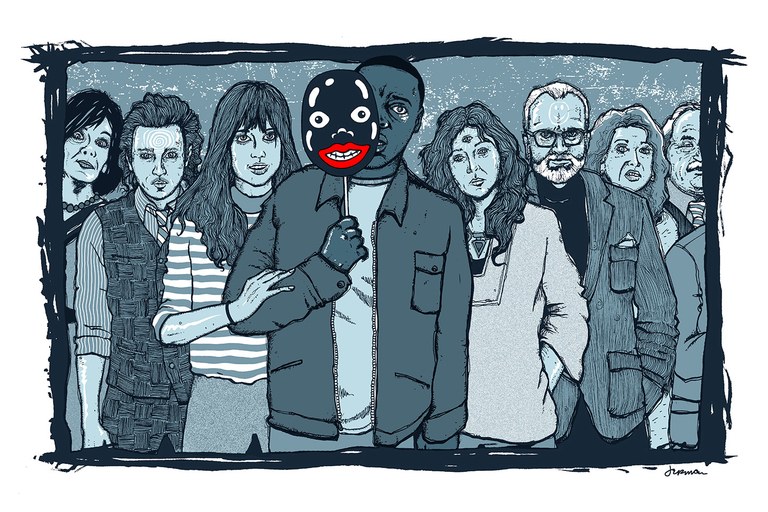There has been a stereotyping of minorities and people of colour in the horror genre, especially within American films. Throughout the history of the genre there has a devaluing of the roles of minorities within such films, and according to one critic “a use of aspects from their culture as fodder for the plot.” These films tend to have a predominately white casts and audience, and cast minorities as violent, and as monsters and villains. The horror genre in particular holds the power to play with aspects of violence in intriguing and symbolic ways.
The Horror Genre began as a way to interrupt the fantasy of everyday life and offer the viewer a form of escape and close contact to their fears in a safe environment. Because of this, horror movies have tropes that reflect common human fears. Or they are supposed to.
Horror tropes reflect the fears, morals, and ideals of humanity, but that humanity is decisively white and racist. The norm and definition of humanity, as defined through systemic racism and white, hetero-patriarchal power, is a white man. So the tropes of horror reflect the fears of a white man and ignore the fears of minorities, especially the fears of people of color, by casting people of color as the monsters the white people are to fight against, the selfless side-character that must die to save the white, violent and racist caricatures of their race, or even not including them at all.
Horror films begin with an ideal life or ideal plans for the main characters but end up interrupting those plans, removing the main characters from their ideal or privileged life, by placing them in the situations the most-likely-white-main characters fear or in situations that reveal what those in power fear and value. For example, the trope of the virgin surviving, because she is the purest, or the “whore” dying in a gruesome yet sexual way while possibly trying to have sex, reveal societies complex and conflicting relationship with sex and purity. The trope of the scary, violent black man reveals white fears of the violence white society perceives to be inherent with black people. Similarly, the black person dying first, apart form Hollywood historically mandating that a black character can’t survive the film, is a sign that they are the most morally corrupt and thus have to be the first to be killed off.
While horror films reveal white societal fears, at the same time ignore actual social issues. The root cause of the violence is ignored, is personal, or is supernatural. There is no real social issue that white people have to face, so none of the horror in horror movies has a social root, thus horror movie writers writing white characters and situations have to come up, imagine, create a source of fear and violence.
That is not the case with Get Out.
“We do not need to think up imagined incidents of vicious, macabre torture. The horror, the terror: it’s all around us”.
– Ariel Smith, a native horror filmmaker
Horror, as a medium, allows for uncensored and gritty symbolism and imagery in order to elicit fear and emotion from the audience. Because of that, Get Out can force the audience to experience the fear of a black main character and the brutality a group of white people are capable at directing towards black people. Chris is who’s story we are experiencing so it’s his and other black people’s fears we are seeing Get Out present. People of color have a real life reason to be scared in their everyday life, the systematic racism, inequality, and injustice present in a “post-racial” America, so Peele (the director) did not need to imagine a source of fear and cruelty for the movie; the reality presented in the film is the source of the fear. This fear is represented by the Police Officer (police brutality), Rose’s parents (racist parents), the guests (fetishization of the black body and other microaggressions), and the bingo (white people wanting to enslave black people once more) to name a few. These are not made up terrors, but fears that people of color have to face everyday with no hope of escape by turning of the TV or leaving the movie theater. We see, in the film, what is the real life horror black people all around us are facing. While white people fear imagined monsters, black people fear white people and, more specifically, white power.
So Peele shows us that fear explicitly by incorporating it in his reworking and retelling of these familiar, racists horror tropes. So, in these sections, you will find short discussions on how Peele reworked a few of those tropes to reflect black fears instead of white culture and fantasy.

